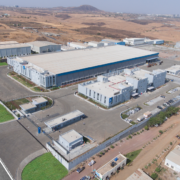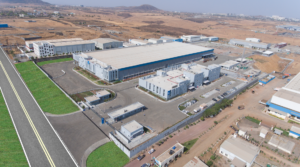Reading Time: 3 minutes SNC-Lavalin Group Inc. recently announed that it has completed its acquisition of WS Atkins plc (“Atkins”), one of the world’s most respected consultancies in design, engineering and project management, with a leadership position across the infrastructure, transportation and energy sectors. Headquartered in the UK, Atkins is a geographically diversified global company with approximately 18,000 employees in the US, Middle East and Asia, together with a leading position in the UK and Scandinavia.
SNC-Lavalin Group Inc. recently announed that it has completed its acquisition of WS Atkins plc (“Atkins”), one of the world’s most respected consultancies in design, engineering and project management, with a leadership position across the infrastructure, transportation and energy sectors. Headquartered in the UK, Atkins is a geographically diversified global company with approximately 18,000 employees in the US, Middle East and Asia, together with a leading position in the UK and Scandinavia.
“SNC-Lavalin is continuing to deliver on its strategy of establishing itself in the top 3 in our industry globally. By combining our two highly complementary businesses, we are solidifying SNC-Lavalin’s position as one of the largest fully integrated professional services firms in the world, while improving our margins and balancing our business portfolio,” said Neil Bruce, President & CEO.
The acquisition of Atkins creates a global fully integrated professional services and project management company – including capital investment, consulting, design, engineering, construction, sustaining capital and operations and maintenance. This acquisition increases the company’s customer base, geographic reach and scale, while strengthening its position globally to develop and capitalise on the infrastructure, rail and transit, nuclear and renewables markets.
The acquisition is expected to improve SNC-Lavalin’s quality of earnings, adding approximately C$3.5 billion of consistent comparatively high-margin revenue, with ongoing revenue from framework and master service agreements, providing long-term repeat business. It further reduces our business risk profile and is expected to improve overall margins, as Atkins operates a consultancy business model, adds a significant amount of reimbursable projects, and fixed-price lump sum contracts do not carry any procurement or construction risk.
Heath Drewett, Group Finance Director and Executive Director of Atkins, now becomes President of Atkins, SNC- Lavalin’s fifth business sector, and a member of SNC-Lavalin’s executive committee, reporting directly to Neil Bruce.
Over the coming months, teams from both organisations will work together to integrate both companies in order to create value for all stakeholders and realise expected synergies from the acquisition. SNC-Lavalin has a strong record of successful integrations and is committed to leveraging the best practices from each organisation to ensure that the two companies are combined with speed, diligence and efficiency.
The acquisition is expected to deliver approximately C$120 million in cost synergies – approximately C$30 million from SNC-Lavalin and C$90 million from Atkins – by the end of the first full financial year. These synergies would mainly include eliminating corporate and listing costs, optimising corporate and back-office functions and shared services, streamlining IT systems, and real estate consolidation where appropriate.
As previously announced by Atkins, Atkins shareholders voted in favour of the acquisition at a meeting convened by order of the High Court of Justice in England and Wales (the “Court”) and a general meeting, both held on June 26, 2017. The acquisition was structured as a scheme of arrangement and the Court sanctioned the scheme on June 29, 2017. Following the sanction of the Court, the acquisition became effective in accordance with its terms on July 3, 2017.
Acquisition Financing Update
The aggregate cash consideration for the acquisition of £20.80 per Atkins share in cash for a total consideration of approximately C$3.6 billion was financed using the net proceeds from the Corporation’s previously announced C$880 million public bought deal offering of subscription receipts completed through a syndicate of underwriters; a C$400 million concurrent private placement of subscription receipts with the Caisse de dépôt et placement du Québec a C$1.5 billion loan2 from the Caisse to SNC-Lavalin Highway Holdings Inc.; a new £300 million unsecured term loan with a syndicate of North American banks as well as approximately £200 million drawn under the Corporation’s existing syndicated credit facility.
With the closing of the acquisition now effective, each subscription receipt will be exchanged for one common share in the capital of the Corporation without additional consideration and without further action by the holders of subscription receipts. Holders of subscription receipts are also entitled to receive a cash amount for each subscription receipt equivalent to the dividend paid by the Corporation on each Common Share on June 1, 2017, less any applicable withholding taxes.
SNC-Lavalin expects that trading in the subscription receipts will be halted from the Toronto Stock Exchange (TSX) before the opening of the market on July 4, 2017, that the transfer register maintained by the subscription receipt agent will be closed and that the subscription receipts will be delisted by the TSX after close of business on July 4, 2017. Trading on the TSX of the underlying Common Shares is expected to begin at the opening of the market on July 4, 2017.
It is expected that settlement of the consideration to which the relevant Atkins shareholders are entitled will be effected not later than 14 days after the Effective Date, in accordance with the terms of the scheme of arrangement.
 Over 250 industry executives from across the industry including contractors, surveyors, civil engineers and architects from across the industry contributed to the survey results, captured in a new report Trend Insights: Sustainability in Construction.
Over 250 industry executives from across the industry including contractors, surveyors, civil engineers and architects from across the industry contributed to the survey results, captured in a new report Trend Insights: Sustainability in Construction.



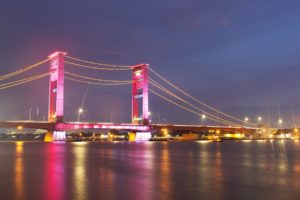 Persada JCB has opened a dedicated, purpose-built new headquarters in Indonesia, supported by manufacturer JCB. Based in Palembang, Sumatera, Persada’s brand new, $1 million-facility provides businesses with access to JCB’s entire family of machines – as well as specialist support and maintenance services.
Persada JCB has opened a dedicated, purpose-built new headquarters in Indonesia, supported by manufacturer JCB. Based in Palembang, Sumatera, Persada’s brand new, $1 million-facility provides businesses with access to JCB’s entire family of machines – as well as specialist support and maintenance services.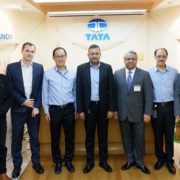
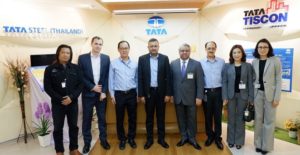 Cleantech Solar (Thailand) Limited (CST) and Siam Construction Steel Company Limited (SCSC), a subsidiary of Tata Steel Thailand, have entered into a long-term energy supply agreement.
Cleantech Solar (Thailand) Limited (CST) and Siam Construction Steel Company Limited (SCSC), a subsidiary of Tata Steel Thailand, have entered into a long-term energy supply agreement.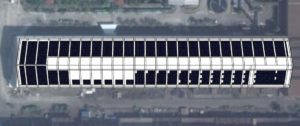
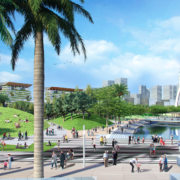
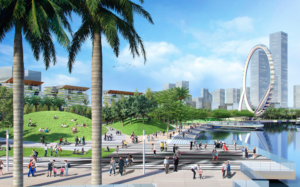 New York City-based Laguarda.Low Architects has been awarded first prize in an international competition conducted by OCT Group for the design of OCT Bao‘an, a new large-scale planned waterfront development in Shenzhen’s Bao‘an district in China. With stunning views of Qianhai Bay, Laguarda.Low’s master plan and design encompasses a 128-acre site and creates dynamic spaces for business, retail and entertainment.
New York City-based Laguarda.Low Architects has been awarded first prize in an international competition conducted by OCT Group for the design of OCT Bao‘an, a new large-scale planned waterfront development in Shenzhen’s Bao‘an district in China. With stunning views of Qianhai Bay, Laguarda.Low’s master plan and design encompasses a 128-acre site and creates dynamic spaces for business, retail and entertainment.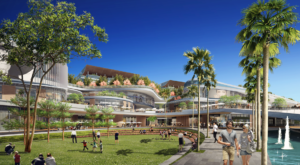

 SNC-Lavalin Group Inc. recently announed that it has completed its acquisition of WS Atkins plc (“Atkins”), one of the world’s most respected consultancies in design, engineering and project management, with a leadership position across the infrastructure, transportation and energy sectors. Headquartered in the UK, Atkins is a geographically diversified global company with approximately 18,000 employees in the US, Middle East and Asia, together with a leading position in the UK and Scandinavia.
SNC-Lavalin Group Inc. recently announed that it has completed its acquisition of WS Atkins plc (“Atkins”), one of the world’s most respected consultancies in design, engineering and project management, with a leadership position across the infrastructure, transportation and energy sectors. Headquartered in the UK, Atkins is a geographically diversified global company with approximately 18,000 employees in the US, Middle East and Asia, together with a leading position in the UK and Scandinavia.

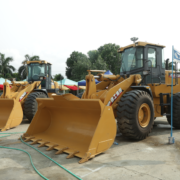
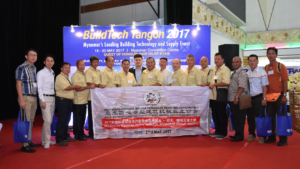 The 4th edition of BuildTech Yangon concluded on 20 May 2017 after three days of industry discussions, international dialogues, commercial engagements and knowledge sharing in Myanmar. Organised by Sphere Exhibits, a subsidiary of Singapore Press Holdings (SPH) and co-organised by the Myanmar Construction Entrepreneurs Association (MCEA), BuildTech Yangon 2017 is the leading industry event focusing on the value chain for the build environment sector in Myanmar.
The 4th edition of BuildTech Yangon concluded on 20 May 2017 after three days of industry discussions, international dialogues, commercial engagements and knowledge sharing in Myanmar. Organised by Sphere Exhibits, a subsidiary of Singapore Press Holdings (SPH) and co-organised by the Myanmar Construction Entrepreneurs Association (MCEA), BuildTech Yangon 2017 is the leading industry event focusing on the value chain for the build environment sector in Myanmar.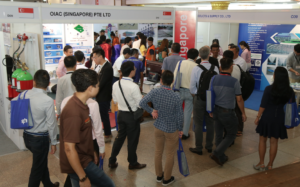
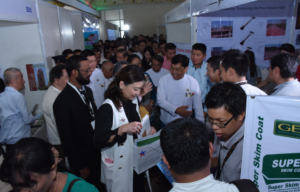 Additionally, a Memorandum of Understanding between the Myanmar Construction Entrepreneurs Association (MCEA) and the Singapore Institute of Building Limited (SIBL) was renewed to further extend their collaboration in advancing the industry. I&H Engineering Co., a joint venture between the Myanmar Ministry of Construction and I&H Asia Pacific, launched their new factory located just outside of Yangon, while trade missions from across the region held closed-door networking sessions.
Additionally, a Memorandum of Understanding between the Myanmar Construction Entrepreneurs Association (MCEA) and the Singapore Institute of Building Limited (SIBL) was renewed to further extend their collaboration in advancing the industry. I&H Engineering Co., a joint venture between the Myanmar Ministry of Construction and I&H Asia Pacific, launched their new factory located just outside of Yangon, while trade missions from across the region held closed-door networking sessions.